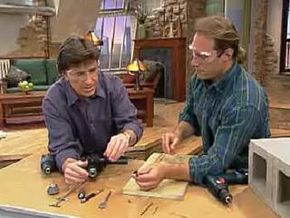While drilling through plastic can be done using any power drill, it’s important to have the correct drill bits so you don’t chip or crack the material. Irregular holes and rough edges could lead to cracking, even months after the drilling occurs. Drill bits for plastic are available in a variety of sizes; however, it’s best to consult with a professional before undertaking a project on your own.
When drilling plastic, the larger the hole, the slower drill speed you should use since high speeds can melt the plastic. Also, always reduce the drill speed as the drill bit exits the material. Before drilling, it’s best to clamp down the plastic securely to a solid surface and back up the piece you are drilling with a spare piece of plywood underneath. This way the drill bit enters the plywood when it exits the plastic and avoids chipping the surface on the bottom.
Advertisement
In addition, it’s recommended to use a lubricant while drilling deeper holes to help remove debris and dissipate the heat. Furthermore, since plastics expand and contract with temperature changes, make sure you drill a slightly larger hole than necessary to allow room for screw movement without placing stress on the material.
The most effective drill bits for plastics are spur-point bits, also known as dowel bits. They are specifically angled to make smooth cuts in the material. A spur-point bit has a central point and spurs that keep the bit aligned, maintaining a clean, neat hole. Some soft materials, including plastics, benefit from countersinking before actually drilling. A power drill is used to countersink or create a depression in the material first. Using a countersink bit along with a plastic drill bit ensures that the drill bit remains in the center of the depression. Never use twist bits when drilling plastics; they can splinter and ruin the material.
Advertisement

